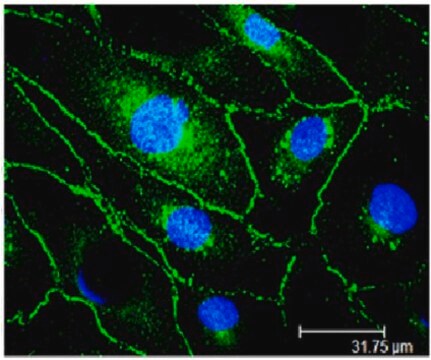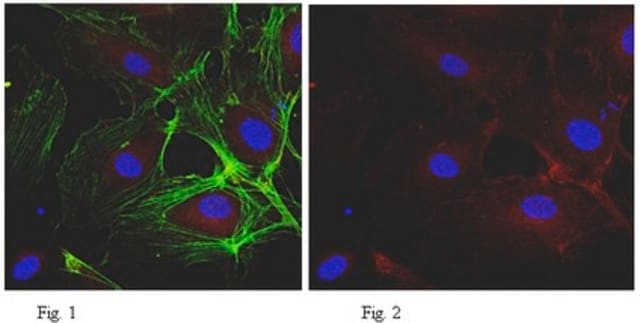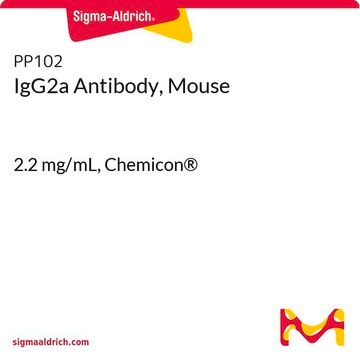MABT134
Anti-VE-cadherin Antibody, clone BV6
clone BV6, from mouse
Synonym(s):
Cadherin-5, 7B4 Antigen
About This Item
Recommended Products
biological source
mouse
Quality Level
antibody form
purified immunoglobulin
antibody product type
primary antibodies
clone
BV6, monoclonal
species reactivity
human
technique(s)
flow cytometry: suitable
immunocytochemistry: suitable
immunohistochemistry: suitable (paraffin)
western blot: suitable
isotype
IgG2aκ
NCBI accession no.
UniProt accession no.
shipped in
wet ice
target post-translational modification
unmodified
Gene Information
human ... CDH5(1003)
General description
Immunogen
Application
Immunohistochemistry Analysis: A 1:10-1:20 dilution of a representative lot was used by an independent laboratory in paraffin-embedded tissue sections. Buffered formalin fixation is recommended with a fixation period of no longer than 12 hours. High heat antigen retrieval in citrate buffer (Cat. No. 21545) is also suggested. Antibody can also be used to label acetone-fixed cryostat sections or cells using a immunoperoxidase staining protocol (eg. IHC Select Detection Kit, Cat. No. DAB150)
Flow Cytometry Analysis: A representative lot was used in the presence of Ca2+. Note: Use PBS + 2-5mM EDTA for cell detachment.
Western Blot Analysis: Non-reducing conditions may be needed, Ca2+ required in buffer (2-5 mM).
Cell Structure
Adhesion (CAMs)
Quality
Western Blot Anlaysis: A 1:2,000 dilution of this antibody detected VE-cadherin in HUVEC cell lysate.
Target description
The calculated molecular weight is 82 kDa but it will run between ~90-140 kDa because this protein is glycosolated.
Linkage
Physical form
Storage and Stability
Analysis Note
HUVEC cell lysate
Other Notes
Disclaimer
Not finding the right product?
Try our Product Selector Tool.
recommended
Storage Class Code
12 - Non Combustible Liquids
WGK
WGK 1
Flash Point(F)
Not applicable
Flash Point(C)
Not applicable
Certificates of Analysis (COA)
Search for Certificates of Analysis (COA) by entering the products Lot/Batch Number. Lot and Batch Numbers can be found on a product’s label following the words ‘Lot’ or ‘Batch’.
Already Own This Product?
Find documentation for the products that you have recently purchased in the Document Library.
Our team of scientists has experience in all areas of research including Life Science, Material Science, Chemical Synthesis, Chromatography, Analytical and many others.
Contact Technical Service






